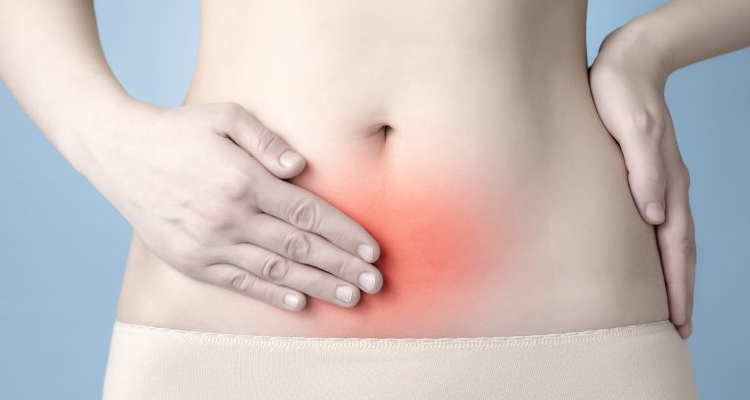
Chronic Pelvic Pain
CPP is defined as pain that occurs below the umbilicus (belly button) that lasts for at least six months. It may or may not be associated with menstrual periods. CPP may be a symptom caused by one or more different conditions, but in many cases is a chronic condition due to abnormal function of the nervous system (often called “neuropathic pain”).
In the United Kingdom CPP accounts for a large number of referrals to a gynecologist and is a common indication for diagnostic and therapeutic surgery.
Causes :
A variety of gynaecological, gastrointestinal, urological, musculoskeletal, neurological and psychological disorders can cause chronic pelvic pain. Although a gynaecological problem may often be the first consideration, it is important that clinicians and patients alike bear in mind that several non-gynaecological causes of pelvic pain exist.
Gynaecological causes — These are thought to be the cause of chronic pelvic pain in about 20 percent of women.
Below are some of the more common conditions which can cause pelvic pain:
Gynaecological
- Dysmenorrhoea
- Endometriosis
- Adenomyosis
- Ovulation
- Pelvic inflammatory disease
- Fibroids/Leiomyomas/Myomas
- Ovarian cysts
- Pelvic congestion syndrome
- Ovarian remnant & Residual ovary syndrome
Urinary tract
- Interstitial cystitis/Painful Bladder Syndrome
Gastrointestinal Tract
- Irritable Bowel Syndrome
- Inflammatory Bowel Syndrome
- Diverticulitis
- Colon cancer
- Chronic constipation
- Coeliac disease
- Chronic intestinal pseudo-obstruction
Musculoskeletal
- Fibromyalgia
- Neuropathic (‘Nerve-related’)
- Pelvic floor spasm/Pelvic floor tension myalgia
- Pelvic bone/Ligamental
- Osteitis pubis
- Coccydynia
- Postural problems
Mental health issues
- Somatisation
- Opiate dependency
- Physical and Sexual abuse
- Depression/Anxiety
- Sleep disorders
Diagnosis :
Because a number of different conditions can cause chronic pelvic pain, it is sometimes difficult to pinpoint the specific cause.
History and physical examination — A thorough history and a physical examination of the abdomen and pelvis are essential components of the work-up for women with pelvic pain.
Laboratory tests may be recommended, depending upon the history and results of the physical examination.
Pelvic ultrasound — Some diagnostic procedures may also be helpful in identifying the cause of chronic pelvic pain. As an example, a pelvic ultrasound examination is accurate in detecting pelvic masses, including ovarian cysts (sometimes caused by ovarian endometriosis) and uterine fibroids. However, ultrasound may not be helpful in the diagnosis of other conditions such as deposits of endometriosis in the pelvic lining (peritoneal endometriosis), irritable bowel syndrome, diverticulitis, or painful bladder syndrome.
Laparoscopy — A surgical procedure called a laparoscopy may be helpful in diagnosing some causes of chronic pelvic pain such as endometriosis and chronic pelvic inflammatory disease. Laparoscopy is a procedure that is often done as a day case i.e. not requiring overnight stay in hospital. If the laparoscopy is abnormal (e.g. areas of endometriosis or abnormal tissue are seen) these areas may be treated or biopsied during the procedure.
If all gynaecological investigations including laparoscopy are normal, other non-gynaecologic causes of pelvic pain should then be explored.
Coping With Chronic Pelvic Pain
Psychological counselling may be offered to help women manage their pelvic pain. There are several types of psychosocial support:
- Psychotherapy involves meeting with a psychologist, psychiatrist, or social worker to discuss emotional responses to living with chronic pain, treatment successes/failuresand/or the impact on personal relationships. Psychotherapy called cognitive behavioural therapy has been found to be helpful in many people with chronic pain.
- Group psychotherapy allows people to compare their experiences with chronic pelvic pain, overcome the tendency to withdraw and become isolated in pain, and support one another’s attempts at more effective management.
- Relaxation techniques can relieve musculoskeletal tension, and may include meditation, progressive muscle relaxation, self-hypnosis, or biofeedback.